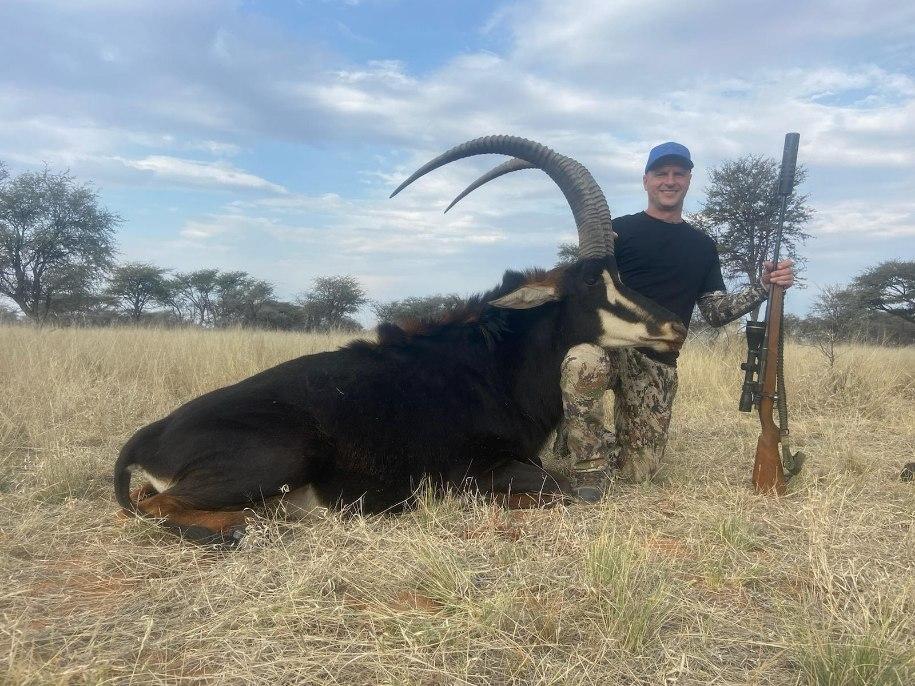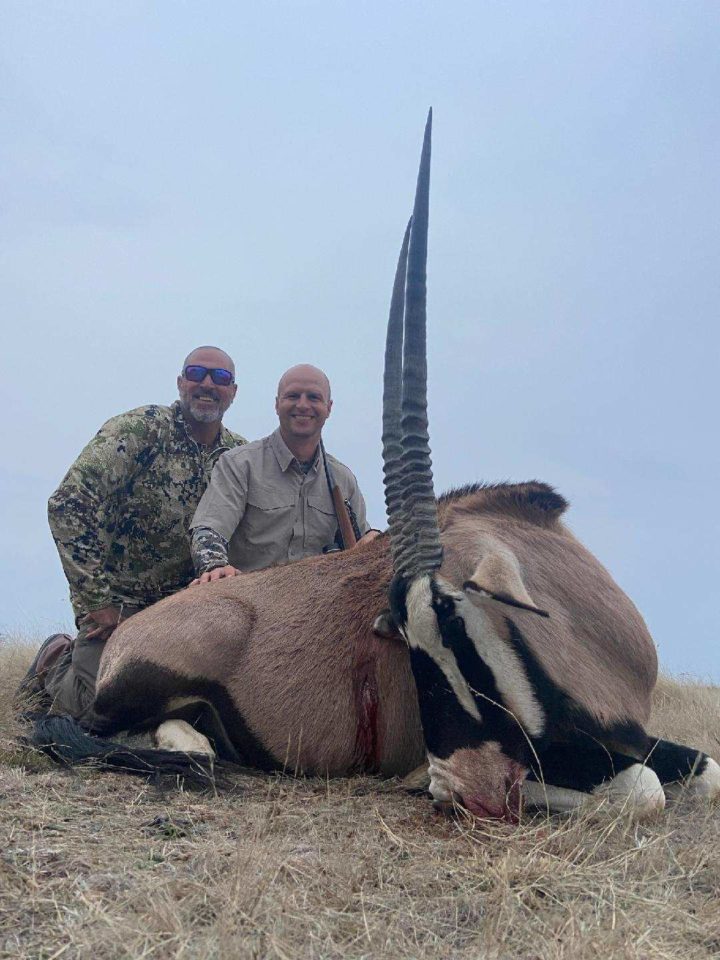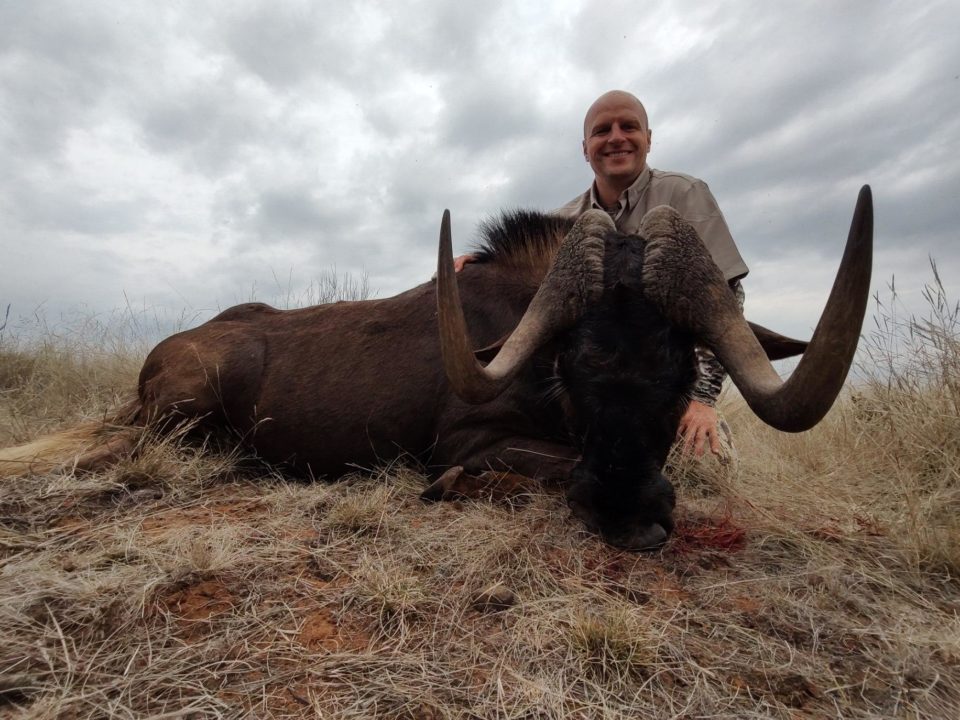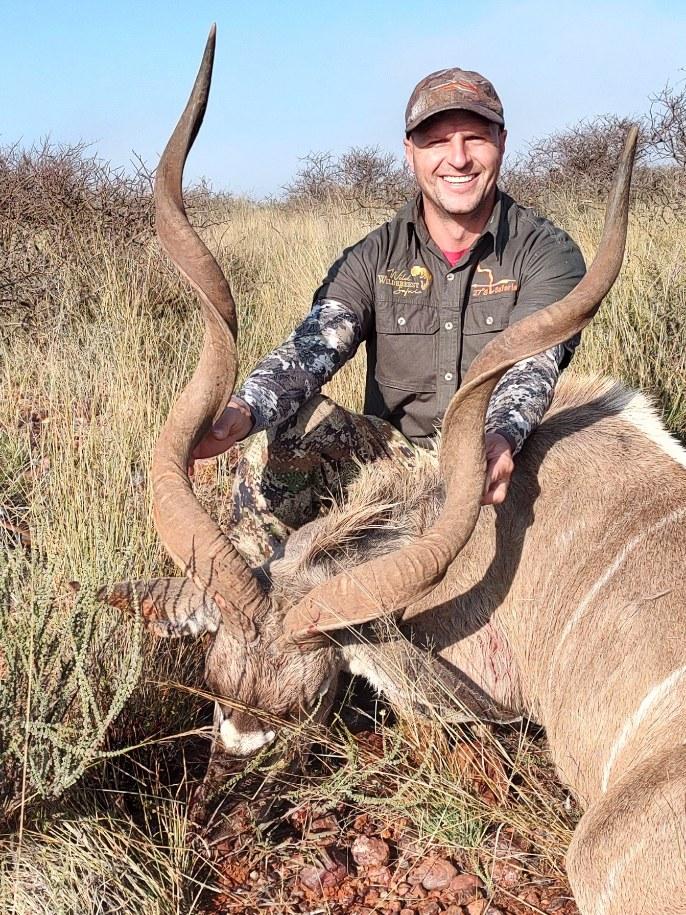by Kyle Stinnett
On August 1, Jake Bauer and a team of 3 friends traveled over 20 hours by plane to find themselves in Johannesburg, South Africa. One of the members of the group had won an all-expenses-paid 5-day hunting trip to South Africa, and the trip included 3 extra tickets. Bauer was delighted to find that he was one of the chosen friends to go on this once-in-a-lifetime expedition. The trip would have cost each member between $2000 and $3000.
South Africa boasts over 40 different species of animals that can be hunted. Completely surrounded by wilderness, the group hunted along the Orange River, whose closest city was Upington, South Africa. Bauer and his group collected a total of 19 animals that included 12 different species. Of the animals harvested, Bauer was proud to say that 4 of them were his trophies and included a sable, a gemsbok, a black wildebeest, and a kudu. Below is some information on the animals that Bauer harvested:

According to the African Wildlife Foundation, “The sable is a rotund, barrel-chested antelope with a short neck, long face, and dark mane. Both males and females boast impressive ringed horns that rise vertically and curve backward. When they arch their necks and stand with their heads held high and tails outstretched, they resemble horses. This flexed-neck position makes sables appear larger than they really are. The males maintain this position even when they gallop, as the arched neck is an important manifestation of dominance.”

Africafreak.com states that “The gemsbok is a majestic straight-horned antelope capable of surviving in some of the harshest and driest environments. It has striking features and stands out in the arid and typically flat areas where it lives. The animal’s aggressive behavior, when threatened by predators, can occasionally result in the death of the attacker.”

Animalia.bio states that “Black wildebeest are characterized by their white, long, horse-like tail. They also have a dark brown to black coat and long, dark-colored hair between their forelegs and under their belly. Calves are born with shaggy, fawn-colored fur. Males are darker than females. Black wildebeest have bushy and dark-tipped manes that stick up from the back of the neck. Both sexes have strong horns that curve forward, resembling hooks. The horns have a broad base in mature males and are flattened to form a protective shield. In females, the horns are both shorter and narrower. Black wildebeest have scent glands that secrete a glutinous substance in front of the eyes, under the hair tufts, and on the forefeet.”

The African Wildlife Foundation website states this about the Kudu: “Both the greater kudu and its close cousin, the lesser kudu, have stripes and spots on the body, and most have a chevron of white hair between the eyes. Males have long, spiral horns. The greater kudu’s horns are spectacular and can grow as long as 1.8 meters (about 6 feet), making 2-1/2 graceful twists.
Female greater kudus are noticeably smaller than the males. By contrast, lesser kudus are even smaller — about 90 centimeters at the shoulder. Males can weigh up to 105 kilograms (230 pounds), and females generally weigh about 22 kilograms less. Lesser kudus have smaller horns than their larger cousins and have conspicuous white patches on the upper and lower parts of the neck. Although both species are bluish-gray, grayish-brown, or rust color, the lesser kudus have five to six more lateral white stripes, for a total of 11 to 15. Both species have a crest of long hair along the spine, and greater kudus also have a fringe under the chin.”
While you cannot keep the meat that is harvested from each animal, it is donated to local organizations that disperse it, helping feed the nearby towns. Hunters are allowed to keep the hides and trophy pieces; however, they have to wait a grueling 3 to 4 months for the taxidermist in the US to receive them and then have to wait an additional amount of time for the taxidermist to work on the trophies.
Bauer was the only member of his family to go on the trip; his sons and wife joined him each day for a facetime call where Bauer would share his world traveling experiences with them. “My boys were very excited every time I sent a picture of a new animal we got to harvest. It will be exciting to have them mounted and placed in our home and give our family good memories of that time.”
Bauer shared a little bit about his experience in the foreign land, “In Africa, you don’t really get out and hike because everything has thorns and is trying to kill you.” Bauer laughed as he said, “But luckily for us, it was winter and the snakes weren’t out, so it was a bit safer.”
“The scariest moment I encountered was when our hunting guide told us that at the beginning of Covid, a group came out and got stuck in the country for 5 months and couldn’t get home. When I heard that, I thought, ‘Oh my gosh! I hope I can get home!’” Bauer stated with a tinge of worry on his face, “but I made it home with no problems.

“We drove around on these Jeeps and got to sit on top with guns looking for animals. It was pretty fun. You are relying on your guide to tell you what is a mature animal to shoot. All of the females at the time were pregnant, and we didn’t want to shoot them. A lot of the species looked very similar, so they had to pick out which ones were which to ensure we were in compliance with local law” Bauer explained.
“What’s crazy about the whole deal is that if you wound something, but don’t recover it, you still have to pay for it. That makes it even more nerve-racking because you don’t want to miss for several reasons now.”
Bauer ended the interview by stating that the experience was in many ways life-changing, and he cannot wait to bring his family on a hunt one day.







